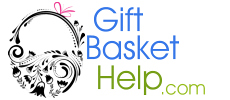Business Startup Costs
Business startup costs must be estimated based on a realistic financial plan when starting a new small home business or gift basket business.
If you’ve been wanting a work at home job, starting a gift basket business is a great option. The important thing when starting a home business is to make sure you have all ‘your ducks in a row’ before you actually launch your home business. There are many elements to starting a business, and hours of planning is involved. Here you’ll find small business startup information and resources that will assist you in the planning stage of starting your business. You’ll also learn the steps of how to take your business to the Internet – where you’ll be able to expand your sales.
How Much Will it Cost You to Start a Home Business?
 Before you start a new business, home business or gift basket business, it’s important to consider your financial situation. By determining your current income and expenses, you’ll be better at projecting your financial needs over the next year.
Before you start a new business, home business or gift basket business, it’s important to consider your financial situation. By determining your current income and expenses, you’ll be better at projecting your financial needs over the next year.
There’s a gap between when you start your business and when you begin to produce income. It’s absolutely necessary to determine the financial amount you’ll need to survive during the first year of opening your business. If you’re independently wealthy – then this topic probably doesn’t apply to you.
You’ll want to prepare a monthly plan for saving and spending. This will help you identify how much money you must earn each month to live. Also, it’ll tell you if your dream of owning your own business fits with your other dreams such as sending a child to college.
To develop a savings plan and spending plan:
First, identify and write down your fixed expenses for each month for the next year. Fixed expenses include items such as insurance, home/ property, car payments, utilities, savings, etc.
Once you’ve identified all of your fixed expenses for each month, total your monthly fixed expenses and annual fixed expenses.
Next, identify your flexible expenses and write them down for each month over the next year. Since you’re not obligated to specific expenses for these items, you have more flexibility in whether or not you want to include them and how much each of them will be. Consider what you’ve spent in previous months and any changes you wish to consider. Flexible expenses include such items as food (including dining in restaurants), clothing/ personal care, entertainment, transportation (gas), etc.
Once you’ve identified all of your flexible expenses for each month, total your monthly and annual flexible expenses.
Now, subtract your total fixed expenses and total flexible expenses for each month from your expected monthly and annual income.
Is there a balance? Do you have extra money each month? If you have extra money, this is a good sign. You can use this savings and spending sheet to estimate how much you’ll need on a monthly basis. You can also use it to determine what will happen if your income or expenses change over the next year.
After examining your savings and spending requirements, you may find you lack the necessary resources to start your business at this time. Don’t worry. This happens to many people. In fact, this may be the first obstacle that you’ll need to overcome.
If you’re still determined to start your business, you may want to begin accumulating alternative sources of income. Over 75% of small business owners use their personal savings to start their businesses. However, if you need more than you have in your savings account, other money sources may be available from bank loans, family members, partners, friends, venture capital companies, mortgage property, loans from the government, or any other source that you can think of. A good rule of thumb is that you should not borrow more money than is necessary to start your business. Often, the more money you must borrow, the less control you have.
If you’re borrowing money from friends or relatives, have an attorney draw up a legal promissory note that outlines all the terms and conditions. Before accepting the loan, prepare a backup payment plan should the business be unable to repay the debt.
Forecasting Sales and Expenses
Planning or forecasting your sales and expenses may seem an impossible challenge for a new business owner because there’s no history to base your forecast on, but it must be done. You have to keep in mind two things: what the costs will be and what sales can you expect from your business. If you interviewed some of your local area companies, you should have a good idea of where your first customers will be. Get the orders started as soon as possible, after opening your business.
Reasons for forecasting sales and expenses:
- To give you an indication of the funds required for startup.
- To prove or disprove the feasibility of your business idea.
- Force you to think practically about the factors critical to your business: costs, space requirements, equipment purchases, inventory purchases, etc.
- Allowing you to see your business on paper before you invest any money.
- To give an indication at what point your business will break even and begin to show a profit.
- To help a lender or investor see the merits and potential profitability of your business.
- To prepare you for possible risks of starting a business and guide you in your personal financial planning.
- To show you how long your startup capital will last and at what point you will need to rely on the cash flow of sales to operate the business.
Using a column pad or a computer spreadsheet, list every expense you will incur, prior to opening your business. This includes rent, signage, supplies, inventory, delivery fees, insurance, postage, advertising, equipment, dues and memberships, licenses, etc.
Be realistic and estimate how many gift baskets you can produce in a day, a week, a month. Take into consideration the amount of time necessary to get your marketing and sales materials into circulation and develop a customer base. What is the average dollar amount of each basket? (you can use $30 as an average, but it could be higher or lower, depending on your market).
Prepare a chart by month of the sales you think you can anticipate. Consider planned vacations, seasonal influences, special promotions, the time it will take to build sales, and when you can expect results from your advertising and marketing efforts. Prepare several versions: the lowest being the amount of sales you will need each month to reach a break-even point after your fixed expenses.







Connect: